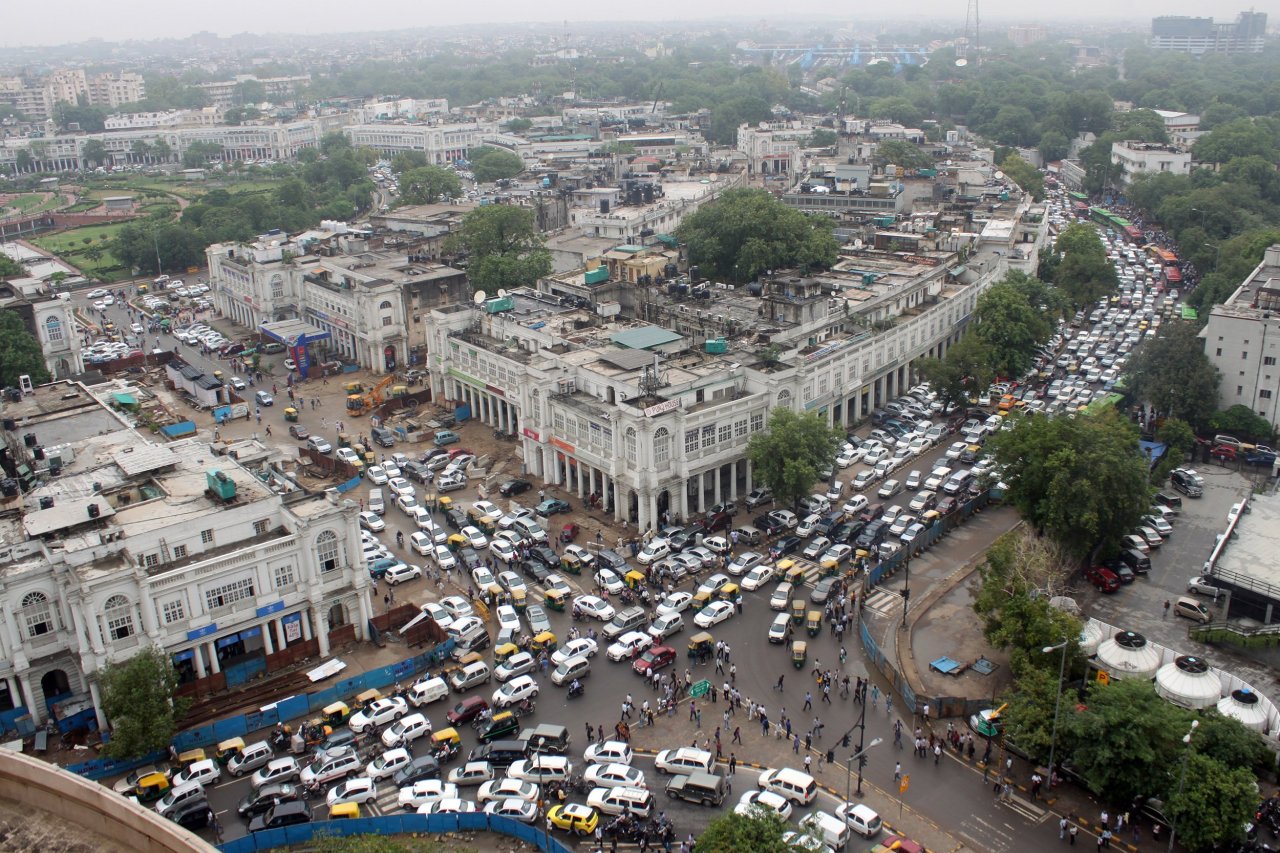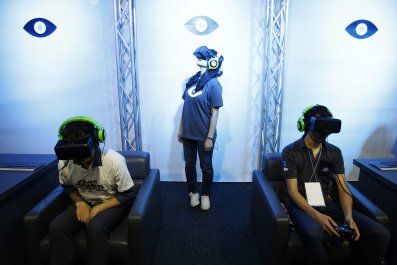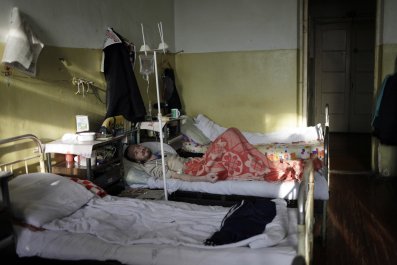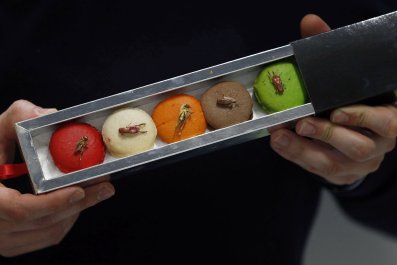One day in early June 2014, the heart from a brain-dead 27-year-old man, a car crash victim, was sped from one hospital to another in Chennai, India. It was 6:30 p.m., right in the middle of rush hour, and 26 police officers worked hard to keep the 8-mile route free of traffic. The trip, normally a two-hour journey at that time of day, took 13 minutes. After the organ was transplanted into the body of a 21-year-old woman with chronic heart problems, the Indian news media celebrated the "green corridor," a roadway cleared for organ transport, as a heroic feat.
Meanwhile, four students in Spain were thinking there had to be another way. Surely organs could be moved without disrupting traffic, incurring exorbitant fees and requiring police attention. Their solution—a drone designed for moving organs—originally created as a contest entry, is now becoming a reality.
An estimated 500,000 people are in need of organ transplantations every year in India. "The demand for organs is huge," says kidney specialist Sunil Shroff, who founded the Multi-Organ Harvesting Aid Network, or MOHAN, an organization dedicated to increasing organ donation in India.
There's some good news: Although only up to 5 percent of patients in India receive the organ they need (the U.S. rate, by comparison, is about 23 percent), the number of transplants there has been rising over the past few years. The vast majority of organs for transplant in India once came from living donors rather than cadavers, and overall donation rates were low. A lack of both the infrastructure for handling the process and training for counseling families thwarted donations, as did, to a lesser extent, cultural and religious beliefs about removing organs from dead bodies. Efforts by MOHAN and other organizations to encourage citizens to register as donors—and the gradual improvement of infrastructure, including the training of transplant coordinators to speak with families after a loved one dies—have led to a slow but steady increase in the number of organs available for those in need.
Today, one of the biggest challenges is practical: moving organs from one hospital to another. Organ transplantation is a race. A harvested heart, for example, must be transplanted within four to six hours. In India, the race can be slow going. The number of cars on the road is the most glaring problem. Inner-city traffic is "horrific," says K.R. Balakrishnan, chief of cardiac surgery at Fortis Malar Hospital in Chennai. When you're on streets without operating lights, a left turn may take 45 minutes. In rainy weather, what is normally a 10-minute drive may take three hours.
Green corridors have proved an indispensable solution. When an organ is ready for donation, hospitals work with police and other authorities to move drivers to the roadside and keep the lights green, allowing ambulances transporting organs to avoid traffic snarls. But transplant specialists warn against relying on this as the sole method for moving organs in metropolitan areas, especially as the volume of transplants increases. "You can't stop traffic every day," says Balakrishnan, who helped originate the corridors.
In 2014, the United Arab Emirates held the first Drones for Good competition, offering a prize of $1 million for the most life-improving design. Among the finalists was Dronlife, an unmanned aerial vehicle for transporting organs and lab materials, created by four women then studying at Spain's School of Industrial Design of Ferrol. Although Dronlife didn't win—that honor was given to a crash-proof drone called Gimball—the invention drew the attention of David Carro Meana, president of IFFE, a business school in northwestern Spain attempting to foster socially responsible innovation. He and colleagues launched a for-profit company to market Dronlife (the four designers own a share of the company), and Ricardo Blanco, a project director with IFFE, set about perfecting the technology.

As Blanco explains, the drone needed to satisfy a few basic requirements to be fit for organ transporting. The total weight must not exceed 44 pounds, and the drone must achieve an average flight speed of 56 miles per hour. So they built a drone body out of a carbon-fiber composite, which is both lightweight and strong. The single-use container that carries the organ, which can weigh no more than 5½ pounds, is made of inexpensive thermoplastic (think Legos), so it doesn't cost too much to throw it out after one use.
Temperature-control presented a predicament, since organs must be kept at 39 degrees Fahrenheit or lower. Ice keeps an organ cool from the time it is removed from a donor until it is loaded onto the drone but is too heavy to go along for the flight. Dronlife uses Peltier cells, devices used in some portable coolers and to cool electronics. Powered by the drone battery, an electric current passes through the cell, which heats one side and cools the other. The Dronlife cooling system achieves a temperature of 24.8 degrees Fahrenheit, cooler than necessary in case of delays. Considering the hot climate in India during most of the year, that could be a crucial benefit.
In order for the drone to navigate safely, Blanco and a team of engineers created software that would provide "a very precise mapping of the territory," he says. Every element of the landscape the drone may encounter needs to be identified. Ensuring a safe landing also requires detailed visuals of the destination. Dronlife is equipped with a special camera that identifies specific features of the area, and the software then interprets these features and issues flight instructions that ensure a clear path.
The total cost to get set up—for two drones, a base station, two piloting consoles, 45 containers and sanitation supplies using ultraviolet radiation, plus training—is estimated at $2.7 million. A private company collaborating with a network of nonprofit hospitals in New Delhi, India, is now working with Carro Meana and his team to finalize the details. Testing of Dronlife in New Delhi is expected to begin later this year.
Other medical groups in India are also pursuing drones for organ transport. Shroff and his colleagues are planning trial drone runs in Delhi, pending approval by regional air traffic control. Balakrishnan and others at Fortis Malar are planning to test drone-based transport within the next few months. As Balakrishnan sees it, the medical potential of drones is vast. The technology could also be used for carrying donated blood to blood banks or for bringing medications to people in need. "A whole lot of lifesaving stuff can be transported," he says.
Back in Spain, IFFE has its eye on many other life-improving drones. For example, Blanco is developing an artificial-vision system to identify chemical changes in soil that may signify the presence of a disease-causing infestation. The technology may also help identify levels of moisture in the soil, thus locating areas of overuse; find polluted areas in water; and detect land mines to allow their safe removal.
Until now, drones have been mainly confined to military operations and, increasingly, proposals for futuristic consumer services, like pizza delivery. "I think that what we're working on is more precious cargo," says Scott Pritchard, who runs Transplant Transportation Services, a California-based charter flight company for organ transport. He is in the early stages of investigating drones for this purpose in the U.S.
"Nothing is proven quite yet because everything on the civilian side is in its infancy," Pritchard says. "It's an exciting time to be around."






















